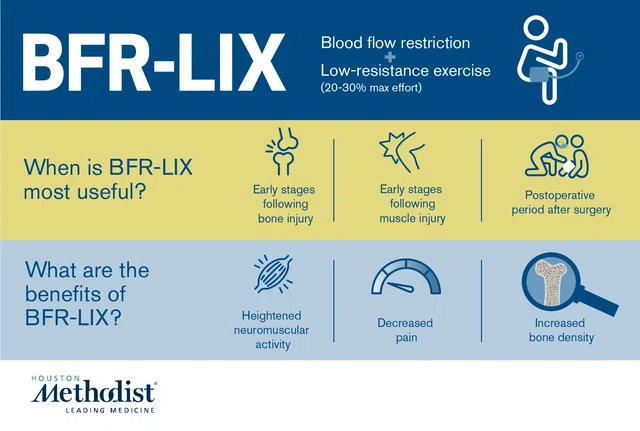


Introduction
Ann Kimball and John W. Johnson Center for Cellular Therapeutics at Houston Methodist
Houston Methodist Dr. Mary and Ron Neal Cancer Center
The Food & Health Alliance within the Houston Methodist Lynda K. and David M. Underwood Center for Digestive Disorders, Immunology Center and the Fondren Inflammation Collaborative
Houston Methodist Cockrell Center for Advanced Therapeutics
Paula and Joseph C. “Rusty” Walter III
Translational Research Initiative
Jerold B. Katz Academy of Translational Research
Infectious Diseases Research Fund
George and Angelina Kostas Research Center for Cardiovascular Medicine
New Endowed Chairs Positions
EnMed
Center for Bioenergetics
result
Clinical Research
Outcomes, Quality and Healthcare Performances
Restorative Medicine
Precision Medicine
Science in Service
of
Medicineresult
President's letter
2022 Metrics
Cycle of Translation
Visionary Gifts of Hope


Introduction

Ann Kimball and John W. Johnson Center for Cellular Therapeutics at Houston Methodist

Houston Methodist Dr. Mary and Ron Neal Cancer Center

The Food & Health Alliance within the Houston Methodist Lynda K. and David M. Underwood Center for Digestive Disorders, Immunology Center and the Fondren Inflammation Collaborative

Houston Methodist Cockrell Center for Advanced Therapeutics

Paula and Joseph C. “Rusty” Walter III Translational Research Initiative

Jerold B. Katz Academy of Translational Research

Infectious Diseases Research Fund

George and Angelina Kostas Research Center for Cardiovascular Medicine

New Endowed Chairs Positions

EnMed

Center for Bioenergetics

From Discovery to Clinic


What is "Discovery to Clinic"?

Clinical Research


Houston Methodist Conducts First-Ever Study into a Challenging Situation

Can Regulating Cellular Aging Mitigate Both Cancer and Heart Disease?

Innovative Treatment for Chronic Rhinitis is Safe and Effective


Masters of Disguise: Glioblastomas Trick the Immune System by Masquerading as Reproductive Tissue
Improved Options for Patients with Severe Retinal Vascular Disease

A New FDA-Approved Treatment for Sufferers of Chronic Constipation

Houston Methodist joins the Gulf Coast Consortia

Outcomes, Quality and Healthcare Performance


New Findings on RNA Helicases May Yield New Intestinal Disease Therapy

Houston Methodist and Pennsylvania State University Collaborate on a Smartphone App That Could Revolutionize Stroke Diagnosis

New Frontiers to Improve Cardiovascular Medicine and Disease Management

Ongoing Lessons in a Pandemic

Transplants can Boost Survival Rate of Patients with Unresectable Liver Cancers

Telehealth Video Visits During the COVID-19 Pandemic – a Glimpse into the Future?

SARS-CoV-2 Induced Chronic Oxidative Stress and Endothelial Cell Inflammation May Increase Likelihood of Cardiovascular Diseases and Respiratory Failure

Restorative Medicine


Lessening Pain After Knee Replacement Surgery

Do Motor Neurons First Die in the Brain? Study Provides Clues about ALS Origins

Bringing Back Hand Function in People with Complete Spinal Cord Injury

Novel Vascular Engineering Platforms Are a Boon for Bioengineering

Ultra-high-Resolution Scanner Reveals if Knee Injury Advances to Osteoarthritis

Houston Methodist Model Demonstrates Reversal from Heart Failure State, Creating the Potential for Innovative Treatment Avenues

Precision Medicine


Rapidly Scalable, All-Inducible Neural Organoids Could Facilitate Drug Screening for Neurological Diseases

Importance of the Coronary Artery Calcium Score in Risk Assessment and Prevention of Atherosclerotic Cardiovascular Disease

COVID-19 Infection in Crucial Brain Regions May Lead To Accelerated Brain Aging

Interleukin 9 Secreting Polarized T Cells Show Potential in Solid and Liquid Tumor Treatment

The NanoLymph: Implantable. Adaptable. Anti-cancer





Discovery to Clinic
Restoring Muscle Strength Gets a Helping Hand from Blood Flow Restriction Training

Restorative Medicine
Restoring Muscle Strength Gets a Helping Hand from Blood Flow Restriction Training
For those recovering from orthopedic procedures or sports injuries, strength-building exercises are often an essential component of their rehabilitation plan. However, the most substantial benefits are seen with high-load resistance training. But these exercises may be unsuitable for patients who are experiencing chronic pain post-surgery or are in the early stages of recuperation after injury.

For those recovering from orthopedic procedures or sports injuries, strength-building exercises are often an essential component of their rehabilitation plan. However, the most substantial benefits are seen with high-load resistance training. But these exercises may be unsuitable for patients who are experiencing chronic pain post-surgery or are in the early stages of recuperation after injury.
In a recent review in Arthroscopy, Sports Medicine and Rehabilitation, investigators from Houston Methodist's Orthopedics and Sports Medicine Center discussed the clinical benefits and applications of combining blood flow restriction with low-intensity strength training. This technique, they reported, could improve muscular endurance and power without subjecting patients to considerable discomfort from strenuous exercises.
“For someone who is, say, still recovering from a knee surgery, any kind of strenuous weight training exercises is very unsafe,” said Corbin Hedt, PT, DPT, Senior Physical Therapist at Houston Methodist. “Blood flow restriction gives us a workaround solution by utilizing lower-level activities to improve strength without sacrificing safety or pain. And yet, we still almost get the effect of doing heavy weight training.”

Corbin Hedt, PT
Blood flow restriction training with low-intensity exercise (or BFR-LIX), traces its origins to Kaastu, a Japanese technique serendipitously discovered by physician Yoshiaki Sato in the 1960s. Sato noticed that by sitting in a kneeling position for a long time, he had restricted blood flow to his legs, causing his calf muscles to hurt in a manner that reminded him of the muscle pain he felt after lifting weights. Since his discovery, the training method has been developed and streamlined into a more standardized protocol to ensure the safety and efficacy of blood flow restriction training methods with clinical practice.

Briefly, much like a blood pressure machine, a cuff is fastened on the proximal end of either an arm or a leg, depending on the limb requiring the strengthening exercise. Then, each individual’s personalized tourniquet pressure is carefully measured to ensure a safe and efficacious restriction of blood flow. Once a prescribed level of occlusion is achieved, the patient performs low-intensity resistance exercises that are between 20% and 30% of maximal effort.
But how does BFR-LIX improve muscle strength and tone? During aerobic exercises, muscles use oxygen shuttled by the blood. But when the activity is strenuous, the metabolic demand of the muscle increases. To cope, muscles start to generate energy using anaerobic mechanisms, whereby glucose is converted into lactate, releasing energy. But if pressure is applied to the vascular system and the blood flow is limited to the exercised muscles, even low-resistance training can deprive muscles of sufficient oxygen, triggering anaerobic energy production and a buildup of metabolites near the cuff.
“What happens is lactate and hydrogen ions that are normally only produced when you're lifting heavy weights or when you're sprinting are generated with blood flow restriction,” said Hedt. “When the cuff is removed, these metabolites get flushed, and the body thinks it did something hard and strength has to be restored in that area.”
The paper also highlights putative biochemical signaling pathways that are evoked by BFR-LIX, including those regulated by hormones, such as insulin, growth factors and immune molecules.
While the positive outcomes of BFR-LIX for muscles distal to the occlusion site have been known for some time, the authors noted that there is emerging evidence of the benefits of the technique in proximal muscles, such as those in the hip or shoulder, bone and connective tissue. For example, researchers from Houston Methodist were the first to show that compared to healthy, untrained adults who only did low-intensity strength training, patients who received blood flow restriction along with rotator cuff training had improved muscle mass and isometric strength of the shoulder muscles.
The authors noted that the current clinical applications of BFR-LIX include preventing muscle injury, speeding recovery after injury, modulating pain post-surgery, reducing muscle weakness due to neurological conditions and improving muscle strength for aerobic fitness. However, future applications of BFR-LIX will aim to encompass a wider variety of clinical conditions and patients.
“We at Houston Methodist were likely the first system in the state, if not one of the first in the nation, to recognize its benefits and start using it with our patients,” said Hedt.
More from Discovery to Clinic














